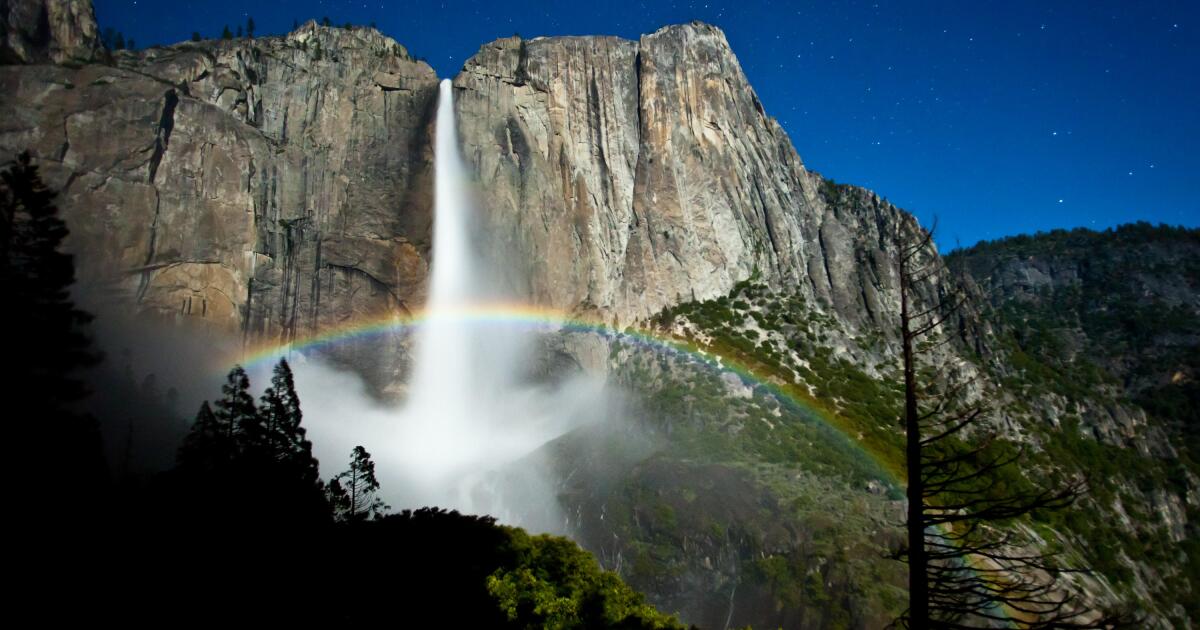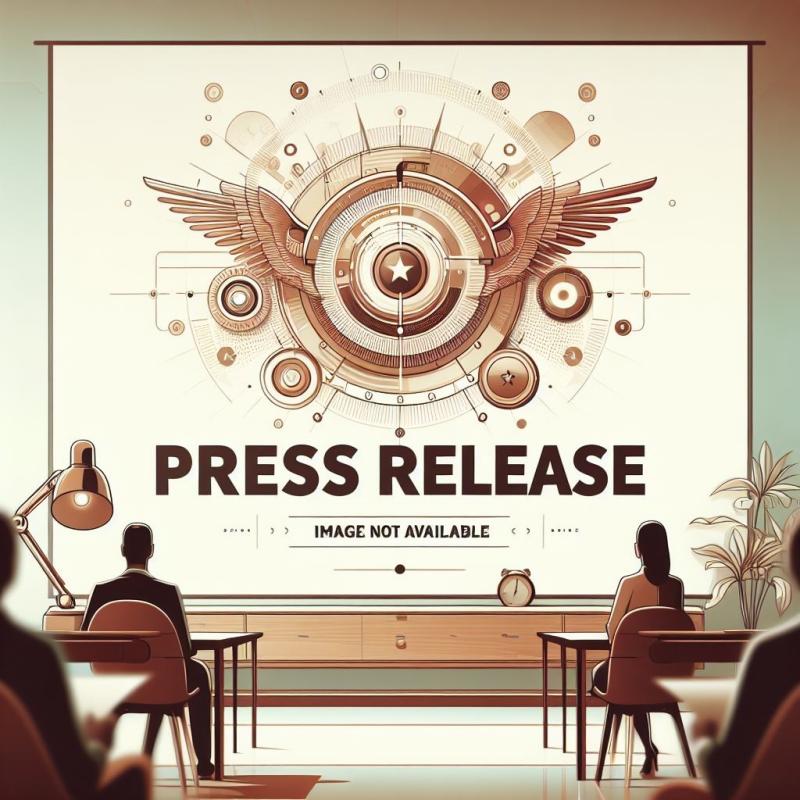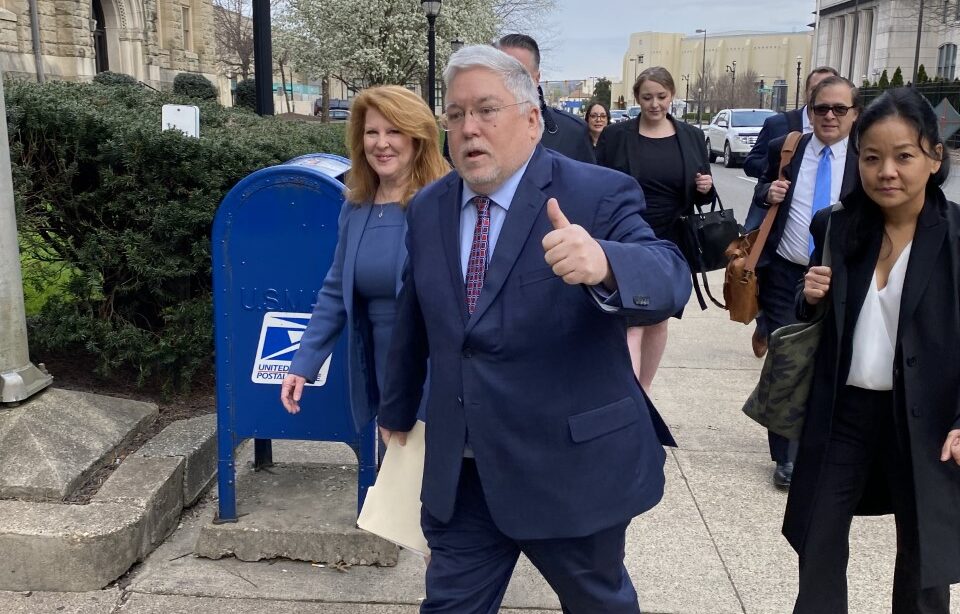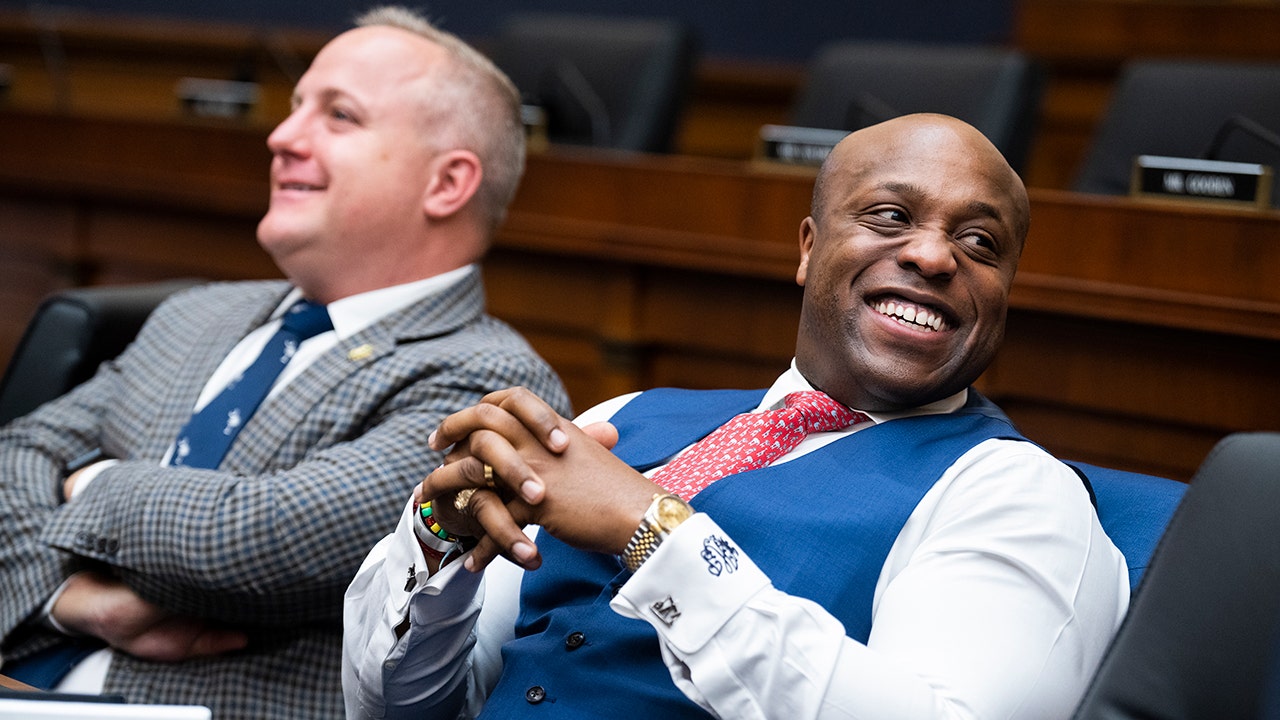Lifestyle
Are you oblivious to L.A. earthquakes? Here's why you might be a 'never-feeler'

Joy Lee has lived in the L.A. area for her entire life, but the 48-year-old says she hasn’t felt an earthquake in almost two decades. “Sometimes I will be on social media and suddenly my friends will start commenting on the earthquake, and I will realize I felt nothing,” she said.
One time she thought an earthquake may have happened after seeing a strange ripple in the tank of her 5-gallon water dispenser. It was “like the scene where the glass of water vibrates in ‘Jurassic Park.’”
As usual, she went to social media to confirm her suspicions. Indeed, there’d been a quake that, once again, she didn’t feel.
Lee is what we’ve dubbed a “never-feeler,” someone who never — or very, very rarely — registers the rumblings of the earth beneath their feet.
After two early January SoCal quakes (a 4.1 magnitude on New Year’s Day and a 4.2 four days later), The Times conducted an informal survey to find out more about the chronically earthquake-oblivious. Lee was among the readers to share their feelings — or lack thereof.
On Tuesday, a 2.8 magnitude quake was reported in View Park-Windsor Hills at 8:19 a.m. While this one would be considered a “light” earthquake — too low to trigger the shake alert app — more than 170 people shared did-you-feel-it reports within 30 minutes, according to the U.S. Geological Survey.
Of 116 Times questionnaire respondents, about a quarter described themselves as avowed never-feelers; people who, despite living in the L.A. area for between two and 42 years, had never felt even the slightest quiver no matter the magnitude. Meanwhile, 61% reported that, while they had indeed felt the earth tremble at some point — especially if the quake was on the bigger side — they haven’t felt one in a very long time.
Julian Lozos, an associate professor of geophysics at Cal State Northridge, said there is solid earthquake science behind why some folks feel quakes while others don’t in any given situation.
“In general, you’re more likely to feel earthquakes if you’re sitting still [instead of] moving around, you’re more likely to feel them if you’re awake [instead of] asleep — obviously — but it also depends on where you are. There have been earthquakes in the San Fernando Valley, for example, that I’ve felt while people just on the other side of the Santa Monica [Mountains] haven’t.
“And it would definitely depend on where you live in terms of there being a constant source of noise or movement, like living in an apartment building where there’s constantly other stuff going on versus a single-family home. In that case you’re more likely to either think that’s what it is or, more likely, to just have developed the ability to tune it out.”
Indeed, Lee thinks her location may play a role in her earthquake ignorance. “[I] only have been quake-oblivious since moving into our home in Mt. Washington 17 years ago,” she said. “I think it has to do with the geology that our house sits on.” Linnea Stanley, a four-year Angeleno who lives in Bel-Air but used to live in Beachwood Canyon by the Hollywood sign, wondered if she never feels earthquakes because “maybe I live far enough [away] from them?” Isabel Corazon, a 37-year-resident born and raised in L.A. and currently residing in downtown’s Historic Core, believes she may have grown immune.
“I do find it strange since I’m hypersensitive to how others are feeling at any given moment in addition to how I’m feeling at any given moment,” Corazon said. “I’m highly intuitive and perceptive. So I’m honestly confused as to why I never feel earthquakes. … Maybe when you have generational time spent in L.A., you become like one with the earthquake?”
Lozos, whose area of expertise is computer simulations (“I make fake earthquakes on my computer”) has a keen interest in the never-feeler phenomenon, having observed it firsthand in the classroom.
“I always ask my students if they’ve felt an earthquake, and most of them say they have — but some of them say they haven’t,” Lozos said. “And I think some of that has to do with how much are they even thinking about it? I’m thinking about earthquakes most of the time, because it’s my job, right? So I’m more likely to feel something and go, ‘OK, was that an earthquake? Or was that my neighbors, or was that the fire station across the street?’ Whereas people who aren’t necessarily thinking about it all the time … chances are they probably have felt earthquakes and just never thought to look into it. It’s like how much does it come to your mind to begin with?”
The never-feelers’ theories
Generally, the survey respondents who don’t feel earthquakes had three main reasons. A third of them, including Lee, cited their physical location.
Lozos explained that differing locations — even within the same building — can make a huge difference in how a quake is felt. He used his personal experience at a 2014 earthquake conference in Japan as an example. “It was lunchtime and they had half of us at a fourth-floor restaurant and half of us at an 18th-floor restaurant in the same hotel when a magnitude 4.9 earthquake hit,” he said. “The people on the fourth floor felt a very sort of abrupt shaking — a jolty shaking — and the people on the 18th floor felt a lot more swaying. … [which] one might perceive as the wind versus an earthquake.”
Others theorized they had become desensitized to the jolts, jiggles and sways of the earth, due to medical conditions (from ADHD-induced wiggling legs to frequent seizures), previous earthquakes or even where they grew up. “As a native Seattleite, I have spent A LOT of my life on boats (rowboats, ferry boats, speed boats, crew shells, kayaks, canoes, etc.),” wrote Colleen Davis. “Therefore, I am very used to the feeling of having sea legs and having water rolling under me. Who knows if there is a connection? But it makes as much sense as any other theory, I guess.”
Lozos said most earthquakes are small and last for a very short period of time — a second or less. “And there are so many other things that can cause movement like that, that it might not even be something you think to check. So, later on, when the earthquake is on the news, or is exploding on [X] or BlueSky or Mastodon or wherever you are, you have to step back and think, ‘Did I feel something earlier? What time was that?’ There’s probably a lot of that.”
A surprising number of respondents (to me at least) simply copped to being too distracted to notice. “I honestly feel like I just don’t pay attention,” explained Tess Steplyk of her six-year streak of quake obliviousness. “But most the time I am quietly working from home. So I think it’s a skill!”
Not paying attention is what Lozos thinks is probably at work for people who haven’t experienced a single shaker. “I’d be willing to bet that if they’re adults who have lived in California their whole lives,” he said, “they probably have [felt an earthquake] and just didn’t realize what it was. Also, if you haven’t felt one before, you probably have this mental image, like it’s going to be this big obvious thing. And, most of the time, they’re not.”
Didn’t feel it? Don’t be surprised.
Since 1999, the USGS has been running a postquake questionnaire called “Did You Feel It?” It asks people to detail the intensity of shaking and report damage. According to Vince Quitoriano, the program’s developer, of the more than 450,000 Los Angeles County responses since launch, about 96% reported having felt a quake. Using its questionnaire data, the USGS has found that fewer than 10% of people are likely to feel a quake with moderate shaking if they are outside and in motion (say, walking or driving) while roughly 85% of people at rest and located on the higher floor of a building will feel the same intensity quake.
However, the survey wasn’t designed to gather granular data from those who didn’t feel anything, says survey geophysicist David Wald, the scientist behind and manager of the Did You Feel It? system (who created it in the aftermath of the 1994 Northridge quake). “What’s really unfortunate is that to answer the questionnaire to say you didn’t feel it just takes one answer,” Wald said. “And then you’re done. … We get their location, we get the actual intensity [of the quake] where they are based on other people’s reports and we typically know what story [of a building] they were in. But we haven’t put a lot of effort into [exploring] the boundaries of the have-not-felt because that’s such a small fraction.”
Even so, Wald isn’t surprised that some people who have lived in the L.A. area for decades would say they have never felt a single earthquake.
“On the scientific level, I would say that there are definitely so many circumstances that it would absolutely make sense that they didn’t,” he said. “It could have been that [during] one they should have felt they were in a car or in a small building and far enough away where only half the people would have felt it and they were watching TV loudly or whatever. … So even if you lived in L.A., in the early ’90s, you might be in the situation where you wouldn’t have felt an earthquake.”
Hacks for the never-feeler
Given how much where you are, what you’re doing and what you’ve previously experienced can affect your ability to feel any given earthquake, what’s an on-edge Angeleno to do? And can the never-feelers somehow train themselves to become more quake-conscious? When I put that question to Lozos, his (half-joking) response was: “I think the easy answer is to become an earthquake scientist!”
Since that’s not exactly a workable option for most (and even if it were, it certainly couldn’t happen overnight), here are some of the life hacks sent along in the responses to The Times survey. While I can’t personally vouch for them (well, except for the chandelier one — a delicate oyster-shell chandelier in the bedroom serves as the earthquake early-warning system in my home) and nothing should take the place of actual earthquake preparedness, below are some of the clever cues folks rely on to clue them in when they aren’t personally noticing the earth move.
- “We have a chandelier that sways when we have an earthquake. I’ll look up at that if I think we are having one.” — Maribel Diaz
- “I have wind chimes.” — Bonnie Howard
- “[I rely on an] under-the-cabinet wine glass rack. And the best life hack of all — my three cats! All three will perk up, usually meerkat-style, and all look the same direction.” — Lyndsi Gutierrez
- “I use a bobblehead from a sports team, because why not?!” — Lakshmivallabh Pandalapalli
- “I have hanging plants in many rooms of my house, and if the plants are moving that’s my sign that something went down.” — Amanda Rodriguez
- “Mini-blinds and the pool water are clues for the larger ones further away. Twitter and Facebook are helpful for the smaller ones nearby.” — Angel Zobel-Rodriguez
- “In San Francisco, I had a dresser in our bedroom with handles that lay against the drawer face. If I heard them start to rattle, I knew there was an earthquake happening.” — R.W. Ziegler
- “[My] USGS auto alerts [are] set to a low threshold, like a 3.0 on the scale, in a large radius around L.A. They’re sent instantly! Never fails.” — Jackson Finnerman
- “Dogs. My dogs know when one is coming. So they let me know.” — Eileen O’Farrell

Lifestyle
Announcing the 2023 College Podcast Challenge Honorable Mentions


The College Podcast Challenge, now in its third year, received nearly 500 entries from students in 39 states and the District of Columbia. Back in March, we announced our 10 finalists, and earlier this month, we shared the story of Michael Vargas Arango, grand prize winner of the 2023 competition.
Beyond these entries, though, we also received 22 podcasts that caught our ears and that our judges thought had a strong story to tell. Here are the honorable mentions.


650 Words by Audrey Auerbach Nelson
Wesleyan University, Middletown, Conn.
A Hairy Situation by Jane Teran
Rutgers University, New Brunswick, N.J.
All I Want for Christmas is an Environmentally Friendly Tree by Amanda Maeglin
Vanderbilt University, Nashville, Tenn.
Brown Sheep by Isaac Wetzel
Belmont University, Belmont, Tenn.
Bypassers by Aisha Wallace-Palomares
University of California, Berkeley
Cheese Chicanery by Jake Silva
Vassar College, Poughkeepsie, N.Y.
Colorism in the Pilipinx Community by Malaya Mosqueda
San Jose State University, San Jose, Calif.
Experiencing Freedom Again by Ngan Siu Mei
University of Texas at Austin
How We Live: The Student Athlete Edition by Atavya Fowler
Miami Dade College
It’s Time To BeReal by Pari Goel
Duke University, Durham, N.C.
Juan’s Upon A Time by Juan Miguel Manalo
Miami Dade College
Love Beyond Belief by Jack Lindner
Indiana University, Bloomington, Ind.
Palm Leaves by Suraj Singareddy
Yale University, New Haven, Conn.
Puzzles: Are they still playing with our minds? by Yasha Mikolajczak
University of Missouri-Columbia
Rolling Against Hate with the Homos by Audreyanah McAfee
University of California, Berkeley
Sidelined by Jack Ottomano
Pennsylvania State University
SOS 204 Parking by Juanita Hurtado Huerfano
University of Colorado, Boulder
The History of the Silent Disco by Sam Kohn, Rachel Kupfer-Weinstein and Jacob Sarmiento
Cal Poly San Luis Obispo, San Luis Obispo, Calif.
The Sleep Study by Morgan Barela
California State University, Long Beach
The Yellow Wallpaper: An Audio Adaptation by Diego Vazquez, Avery Meurer and Timo Nelson
University of Texas at Austin
Two Ranchers from Mining for the Climate by Juan Manuel Rubio, Nate Otjen, Alex Norbrook, Grace Wang, and Max Widmann. Featuring Rebecca Buck and Lisa Stroup
Princeton University, Princeton, N.J.
UT’s Tower Bells: A Musical Tradition by Shaunak Sathe
University of Texas at Austin
Congratulations everyone! Thanks again for sharing your stories with us. We loved listening to every minute of them. We hope to hear from you again this fall.
NPR’s College Podcast Challenge will return Fall of 2024. Subscribe to our newsletter for the latest updates.
Lifestyle
'Prepare to be enthralled': How to see Yosemite's enchanting rainbows that form at night

We met Brian Hawkins, a Redondo Beach mechanical engineer-turned-videographer, in the near-empty lobby of the Yosemite Valley Lodge. It was just after 9 on a Tuesday night in late April. Our hunt was about to begin, but the weather augured poorly.
“It’s cloudy, clearing later,” he said. “I would not expect to see anything yet.”
This was no chance meeting. A couple of years before I had discovered Hawkins’ website, where he posts photos, videos and very precise predictions of the phenomenon that had lured us to this place, at exactly this time: moonbows.
Naturalist John Muir called them lunar rainbows, or spraybows, revealed by a full moon’s light. Roaring spring and early summer waterfalls in Yosemite National Park make the central California destination one of the few spots on Earth to see them. The next viewing opportunity is May 21 to 25.
Moonbows haven’t realized the popularity of the park’s firefall each February, but visitors are gaining awareness. As we navigated the paved trail in darkness to Lower Yosemite Fall , we passed clumps of walkers going in the other direction, evidently discouraged by persistent clouds. At the base, some 25 were gathered in small groups, many behind a bend sheltering onlookers from the falls’ jet-loud spray.
Muir described the Yosemite Falls’ roar as “fine, savage music,” and Hawkins spoke movingly of how the falls, especially in the upper stretch, maintained a voice, even a presence. Having seen spectacular photos by him and others, my wife, Mica, and I impatiently waited for the moon to reflect the sun’s light on the falls. As did others.
Brian Hawkins, left, ran into Richard and Sally Brewer and Anne Johnston-Fera of Buffalo, N.Y., looking for moonbows in April at Yosemite’s Cook’s Meadow.
(Alex Pulaski)
One photographer showed me a quarter-moonbow image he had captured 20 minutes before during a cloud break. Another, Eric Krapil, 28, from Laurel, Md., shared a full-arc moonbow photo from the night before, captured on his cellular phone.
“We got lucky,” he said. “Some guy walking past us at the lodge said, ‘Do you want to see a moonbow?’”
We certainly did on this night. And a few minutes later, as the yellowish moon briefly shouldered through the haze, Hawkins pointed to a rock. There, he said, a corner of the moonbow begins.
And I saw it: A quarter arc at best, ghostly white in the moon’s faint light. Not everything I had hoped for, but as we walked back later I thanked Hawkins for helping us see that glimmer — a hint of what might come the following nights.
Yeah, he said. A thoughtful pause ensued.
“That was,” he continued, “the most pathetic moonbow I’ve ever seen.”
Before 2007, nobody was precisely sure when and where moonbows would appear at Yosemite. But a team of researchers from Texas State University harnessed computers to meld topography, geometry and astronomy to accurately predict the moonbows’ appearance and published their findings.
Hawkins first visited the park that same year and became mesmerized by its beauty — particularly after seeing a moonbow in 2011. He started doing his own modeling, and his website debuted in 2018. It’s a labor of love — there are no ads, and he doesn’t do tours or hawk T-shirts.
What he does do is help other seekers. Anna Smits, who lives and works in the Yosemite Valley, saw her first moonbow during the pandemic. The park was closed to visitors, but Hawkins still shared his calculations. Now, Smits — both an avid photographer and outdoorswoman — occasionally pushes the envelope to find more elusive moonbow shots.
What does that entail? One night, that involved setting an anchor and rappelling about 15 feet to a ledge near Upper Yosemite Fall. Another time, she set her alarm for 1:30 a.m. for a hike in bright moonlight to Vernal Fall. It was so cold that the condensed spray solidly froze her tripod.
“It’s such a rewarding experience,” she said. “It really lights me up just thinking about sitting in the spray and watching this moonbow cross in front of you.”
That visual reward eluded us on the subsequent two nights of our visit last month. Daytime blue skies surrendered to clouds at night. Hawkins had warned me that first night that nothing was guaranteed.
“Prepare to be enthralled by the scene before you but also frustrated by how difficult it is to shoot,” he said. “A lot of things are working against you — it’s cold, it’s wet, the lens has to be dried off, you can’t use auto focus. You just have to be patient and work through solving all the problems.”
And when the moon is hidden by a curtain of clouds, you comfort yourself with the memory of the falls’ voice and a glimmer of the show waiting when you return.
What is a moonbow?
Simply put, it’s a rainbow seen at night, produced by the light of a full moon reflecting off droplets of water suspended in the air. But humans struggle to detect color at night, so — as with the northern lights — they usually appear white to the naked eye. Photographs, especially with timed exposures to allow more light, render them in full color, just like a rainbow.
Is Yosemite the only place to see moonbows?
No, but there are very few waterfall sites where they can consistently be seen. They include Cumberland Falls in Kentucky and Africa’s Victoria Falls, at the Zambia-Zimbabwe border.
When are the best dates, times and locations to see Yosemite moonbows?
They are best observed on the five nights around the full moon. Hawkins has calculated peak 2024 viewing dates and specific hours by location (Upper and Lower Yosemite falls and Glacier Point) for the next viewing window of May 21 to 25 at his website. Best dates for the following full moon, with his time calculations to follow later, are June 19 to 23.
Is any special gear needed?
Useful items include comfortable walking shoes, a rain poncho if viewing near a fall’s base, cloths to dry lenses and cameras, a tripod for longer camera or smartphone exposures and a headlamp or flashlight (red-light settings are preferable for not disrupting night vision). Weather apps such as Clear Outside predict hourly cloud cover. For the super-advanced, apps such as Photo Ephemeris and Planit Pro will help precisely calculate moon positions (and much more).
Are Yosemite National Park reservations required?
Sometimes. Until June 30, daytime (5 a.m. to 4 p.m.) park entry reservations are required on weekends and holidays. From July 1 to Aug. 16, they are required daily for the same time periods. Those with in-park camping or lodging reservations will be granted park entry. Full rules and a reservation link can be found at the National Park Service’s website.
Is it risky looking for Yosemite moonbows at night?
We didn’t find it daunting. Lower Yosemite Fall is just a 10-minute walk from Yosemite Valley Lodge, where we stayed. Cook’s Meadow, with its broad view of Yosemite Falls, is also nearby, but we decided to drive, largely because dense cloud cover obscured the moonlight. Both Hawkins and Smits counseled using common sense in seeking more remote locations. It’s worth noting that the intrepid Muir, who never shrank from a challenge, almost died one night while chasing moonbows behind Yosemite Falls near Fern Ledge; he escaped drenched and numb from a “wild bath in moonlit spray.”
Lifestyle
Two new novels investigate what makes magic, what is real and imagined


In an enchanted world, where does mystery begin? Two authors pose this question in new novels out this spring.
In Pages of Mourning by the Mexican magical realism interrogator-author Diego Gerard Morrison, the protagonist is a Mexican writer named Aureliano Más II who is at war with his memory of familial sorrow and — you guessed it — magical realism. And the protagonist Alma Cruz in Julia Alvarez’s latest novel, The Cemetery of Untold Stories, is also a writer. Alma seeks to bury her unpublished stories in a graveyard of her own making, in order to find peace in their repose — and meaning from the vulnerability that comes from unheard stories.
Both of these novels, one from an emerging writer and one from a long celebrated author, walk an open road of remembering love, grief, and fate. Both find a destiny not in death, but in the reality of abandonment and in dreams that come from a hope for reunion. At this intersection of memory and meaning, their storytelling diverges.
Pages of Mourning
Pages of Mourning, out this month, is set in 2017, three years after 43 students disappear from the Ayotzinapa Rural Teachers’ College after being abducted in Iguala, Guerrero, Mexico. The main character, Aureliano, is attempting to write the Great Mexican Novel that reflects this crisis and his mother’s own unexplained disappearance when he was a boy. He’s also struggling with the idea of magical realism as literary genre — he holds resentment over being named after the protagonist in 100 Years of Solitude, which fits squarely within it. He sets out on a journey with his maternal aunt to find his father, ask questions about his mother, and deal with his drinking problem and various earthquakes.
Morrison’s voice reflects his work as a writer, editor and translator based in Mexico City, who seeks to interrogate “the concept of dissonance” through blended art forms such as poetry and fiction, translation and criticism. His story could be seen as an archetype, criticism, or a reflection through linguistic cadence on Pan American literature. His novel name drops and alludes to American, Mexican and Latin American writers including Walt Whitman, Juan Rulfo, Gabriel Garcia Márquez — and even himself. There’s an earnest use of adjectives to accompany the lived dissonance of his characters.
There’s nothing magical, in the genre sense, in Morrison’s story. There are no magical rivers, enchanted messages, babies born with tails. Morrison’s dissonance is real — people get disappeared, they suffer addictions, writer’s block, crazy parents, crazier shamans, blank pages, corruption, the loss of loved ones. In this depiction of real Pan-American life — because all of this we are also explicitly suffering up North — Morrison finds his magic. His Aureliano is our Aureliano. He’s someone we know. Probably someone we loved — someone trying so hard to live.
The Cemetery of Untold Stories
From the author of In the Time of the Butterflies and How the García Girls Lost Their Accents, The Cemetery of Untold Stories is Julia Alvarez’s seventh novel. It’s a story that’s both languorous and urgent in conjuring a world from magical happenings. The source of these happenings, in a graveyard in the Dominican Republic, is the confrontation between memories and lived agendas. Alvarez is an acclaimed storyteller and teacher, a writer of poetry, non-fiction and children’s books, honored in 2013 with the National Medal of Arts. She continues her luminous virtuosity with the story of Alma Cruz.

Alma, the writer at the heart of The Cemetery of Untold Stories, has a goal – not to go crazy from the delayed promise of cartons of unpublished stories she has stored away. When she inherits land in her origin country — the Dominican Republic — she decides to retire there, and design a graveyard to bury her manuscript drafts, along with the characters whose fictional lives demand their own unrequited recompense. Her sisters think she’s nuts, and wasting their inheritance. Filomena, a local woman Alma hires to watch over the cemetery, finds solace in a steady paycheck and her unusual workplace.
Alma wants peace for herself and her characters. But they have their own agendas and, once buried, begin to make them known: They speak to each other and Filomena, rewriting and revising Alma’s creativity in order to reclaim themselves.

In this new story, Alvarez creates a world where everyone is on a quest to achieve a dream — retirement, literary fame, a steady job, peace of mind, authenticity. Things get complicated during the rewrites, when ambitions and memories bump into the reality of no money, getting arrested, no imagination, jealousy, and the grace of humble competence. Alma’s sisters, Filomena, the townspeople — all make a claim over Alma’s aspiration to find a final resting place for her memories. Alvarez sprinkles their journey with dialogue and phrases in Spanish and one — “no hay mal que por bien no venga” (there is goodness in every woe) — emerges as the oral talisman of her story. There is always something magical to discover in a story, and that is especially true in Alvarez’s landing place.
Marcela Davison Avilés is a writer and independent producer living in Northern California.
-

 Politics1 week ago
Politics1 week agoHouse Dems seeking re-election seemingly reverse course, call on Biden to 'bring order to the southern border'
-

 World1 week ago
World1 week agoStand-in Jose Raul Mulino wins Panama presidential race
-

 News1 week ago
News1 week agoCompass Direct LLC’s 2024 Registration in North Carolina
-

 World1 week ago
World1 week agoTech compliance reports, Newsletter
-

 News1 week ago
News1 week agoColumbia University cancels its main commencement ceremony after weeks of turmoil
-

 News1 week ago
News1 week agoMan, 75, confesses to killing wife in hospital because he couldn’t afford her care, court documents say
-
News1 week ago
UCLA to resume in-person classes after Gaza protest crackdown
-

 Politics1 week ago
Politics1 week agoPresidential polls show deadlocked race as party conventions quickly approach















